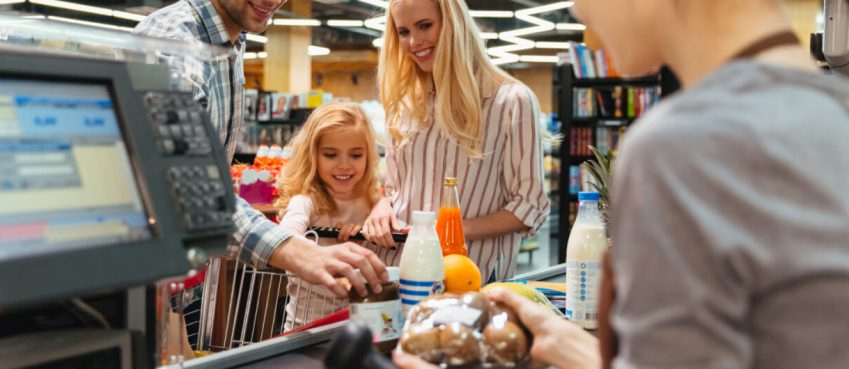
With the rise of mobile device usage, location has become one of the biggest factors in marketing. It gives birth to location-based marketing (LBM)–a complex of tools and promotion strategies that leverages users’ current or past locations to display relevant content to them.
Location-based promotion campaigns combine marketing efforts and software development services focused on the implementation of cutting-edge tools, namely AI, ML, and so on, into mobile apps.
With all the advanced technology available today, the task of getting a deep-level understanding of customers’ needs and satisfying them has never been more realistic and financially promising.
Let’s check out some recent location-based marketing methods, how to start applying them in a marketing campaign and what to expect.
Hyperlocal Marketing
What is it?
While location-based marketing enables advertising on a city- and area-wide basis, hyperlocal marketing helps pinpoint customers within 1–3 meters of their individual locations in a geographically restricted area.
As a result, you target a very specific niche customer for your business and tailor your marketing campaign specifically to them.
Hyperlocal marketing is used for targeting customers conducting near-me searches on their mobile devices and driving foot traffic to a physical storefront.
When a customer looks for the nearest bookstore, coffee shop, or post office, he needs the most relevant and accurate results here and now–and hyperlocal ads are the right tool in this case.
Another use case for hyperlocal marketing is connected with the “research online, purchase offline” trend, also known as ROPO.
Customers want to know what they buy: 54% read reviews before buying online and 39%–before in-store purchases. Providing the information they need at the right moment can dramatically increase sales rates.
Examples
The Whole Foods supermarket chain uses a whole range of hyperlocal marketing tools:
- Geofences around its store locations. Once a customer who has the Whole Foods’ app installed on its mobile device passes by, the system sends a targeted mobile ad with special offers, incentivizing customers to come in and make a purchase.
- Geo conquesting tools. Apart from installing beacons around its own locations, the company has placed them close to their competitors’ ones. Customers receive mobile ads with more attractive offers from Whole Foods and travel a bit further for them instead of choosing a closer competitor’s location.
As a result, the retail giant achieved a 4.69% increase in post-click conversion rates for its mobile ads and stood from the competition.
How to Get Started with Hyperlocal Marketing

- Geofencing. Like in the Whole Foods use case, the method is based on installing sensors in one or more locations within a target store. The sensors transmit desired information to a mobile app installed on the customer’s device via push notifications and digital ads.
- SEO. Businesses use hyperlocal SEO by using the relevant keywords in their ads across multiple channels: Google My Business and other local business directories, Google Ads and Facebook Ads, organic Google search results, Trip Advisor, Bing Places, and so on.
- Retargeting. Promotional offers to returning customers detected close to a retailer can be sent via SMS or mobile notifications.
Augmented Reality Location-based Apps
What is it?
That means augmenting location with interactive and useful digital content attached to geo-based markers.
When the attention span is reduced to 8 seconds, companies are fighting for their customers’ attention. And if the latter don’t want to spend time reading long reads about the benefits of a product or service, a company will demonstrate it, using the AR technologies, and win the customer’s attention.
Also read: Top 10 Marketplace For Selling Digital Products
Examples
Product manufacturers and retailers from numerous industries have a range of successful AR-based marketing use cases:
- The beauty industry. Sephora, L’Oreal, and Perfect Corp have created apps to allow their customers to see how the makeup would look on them digitally.
- Automotive. Hyundai created an augmented manual for drivers and Mercedes has developed ‘Ask Mercedes’, which pairs an AI assistant with an augmented reality interface to answer a host of potential questions.
- Hospitality and entertainment. The Starbucks coffee company and the StubHub ticket resale company have organized virtual tours.
How to Get Started

- AR-powered mobile app. Whether developed from scratch or featuring added functionality in the current app version, the technology allows users to render digitized data (animations, pictures, and so on) over real, physical space with a smartphone. Once a marketing department decides to use such apps in their activity, they choose between market-based AR, which requires a static image on which to render virtual reality, and markerless AR, when a user can freely move the camera while the app will be displaying virtual objects.
- AR billboards. To give a new breath to static billboards, one can think broader and leverage AR tools in outdoor advertising. For example, National Geographic has demonstrated a high-level immersive experience with a digital screen at Rotterdam train station, via which commuters could interact with dinosaurs, animals, and mythical beasts within a given location.
Implementation of Smart Spaces
What is it?
Smart spaces are physical environments that allow individuals to engage with interconnected networks supported by Google Home or Amazon Alexa. Customers also target themselves by including smart products in their lives.
Smart products allow manufacturers to monitor their customers and more opportunities to display ads in a non-intrusive way since the device is already around them.
Examples
Once smart spaces get more incorporated into our every day’s activities, marketers can use a range of tools to motivate customers for future purchases:
- Once a customer pays via Siri for an item, the system may come up with recommendations, reminders, and voice assistance and provide them when the customer approaches the targeted products;
- A smart refrigerator detects a lack of certain foods and sends an app notification when a customer enters a grocery store (thus pushing location data to the smart space system).
How to Get Started
Smart spaces depend on voice assistants as this is the feature that makes all the marketing efforts non-intrusive, yet highly efficient.
Any voice platform used in marketing includes the development of the following components:
- Hardware, which can be both voice-only (Amazon Echo, Google Home, Apple HomePod) and multimodal (for example, using Amazon Echo Show or Google Home Hub) devices.
- Software relying on a voice platform (Amazon Alexa, Google Assistant, and so on).
- Mobile voice apps integrated with the voice platform.
The next step is adapting your marketing efforts and making them voice-first:
- Building conversational AI and VUI, i.e. Voice User Interfaces;
- Working on voice branding, positioning, and spoken content;
- Integrating voice search;
- Developing TTS, i.e. Text-to-Speech, and STT, i.e. Speech to Text, chatbots.
Conclusion
Location-based advertising amplifies the marketing game. In a world where 60% of consumers agree to share their personal data in exchange for clear benefits, marketers should be ready to collect location data and use it for further promotional purposes–once they know how to send relevant information and provide an engaging consumer experience.
Top 10 News
-
01
10 Exciting iPhone 16 Features You Can Try Right Now
Tuesday November 19, 2024
-
02
10 Best Anatomy Apps For Physiologist Beginners
Tuesday November 12, 2024
-
03
Top 10 Websites And Apps Like Thumbtack
Tuesday November 5, 2024
-
04
Top 10 Sites Like Omegle That Offer Random Video Chat
Monday October 21, 2024
-
05
Entrepreneurial Ideas To Make 5K In A Month (10 Realistic Wa...
Monday October 7, 2024
-
06
[10 Best] Cash Advance Apps Like Moneylion And Dave (No Cred...
Friday September 20, 2024
-
07
Top 10 Richest Person In The World
Tuesday August 27, 2024
-
08
Top 10 Unicorn Startups In The World (2024-25)
Monday August 26, 2024
-
09
Top 10 IT Companies In The World By Market Cap
Thursday August 22, 2024
-
10
[10 New] Best OnionPlay Alternatives To Stream TV Shows And ...
Tuesday June 11, 2024







